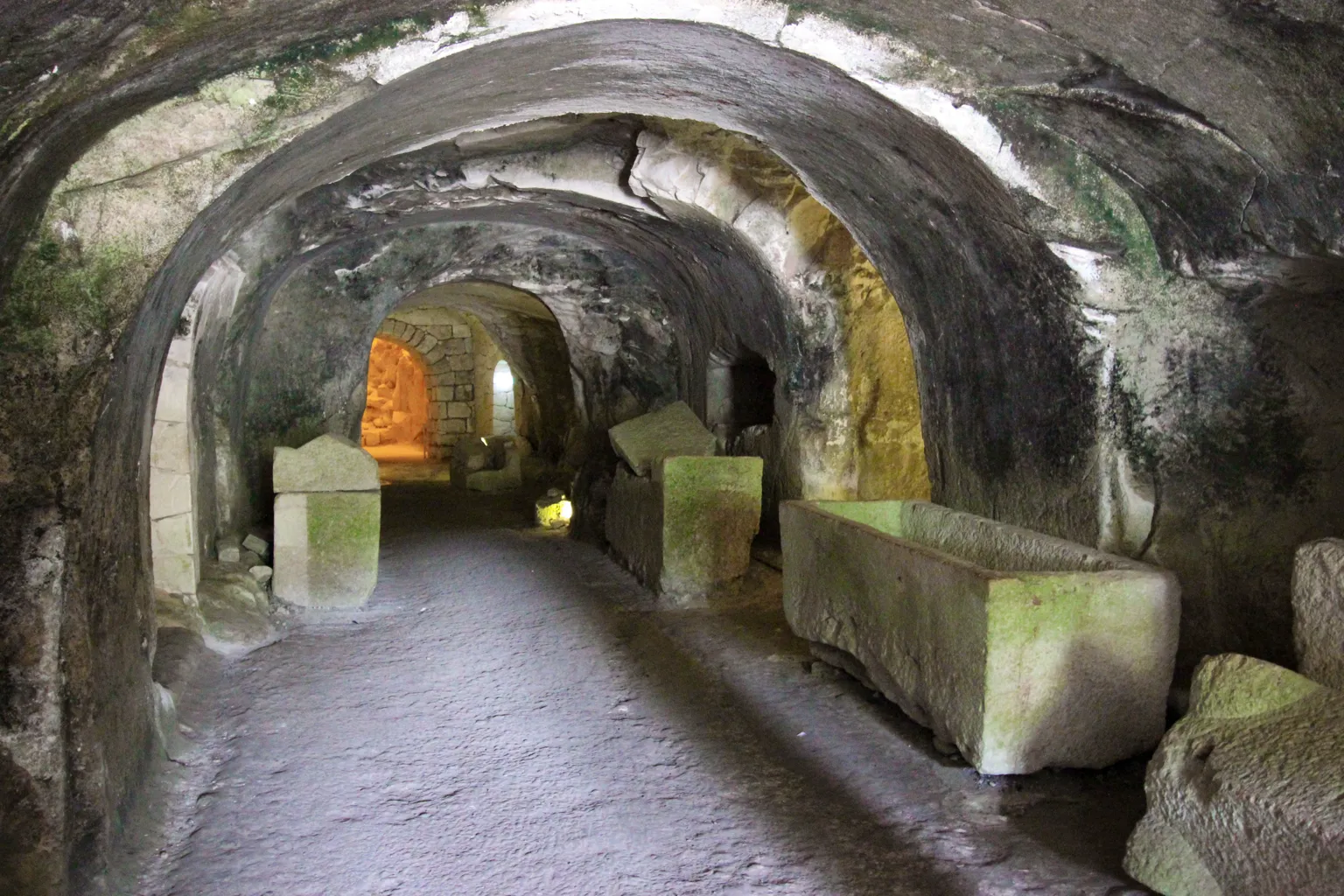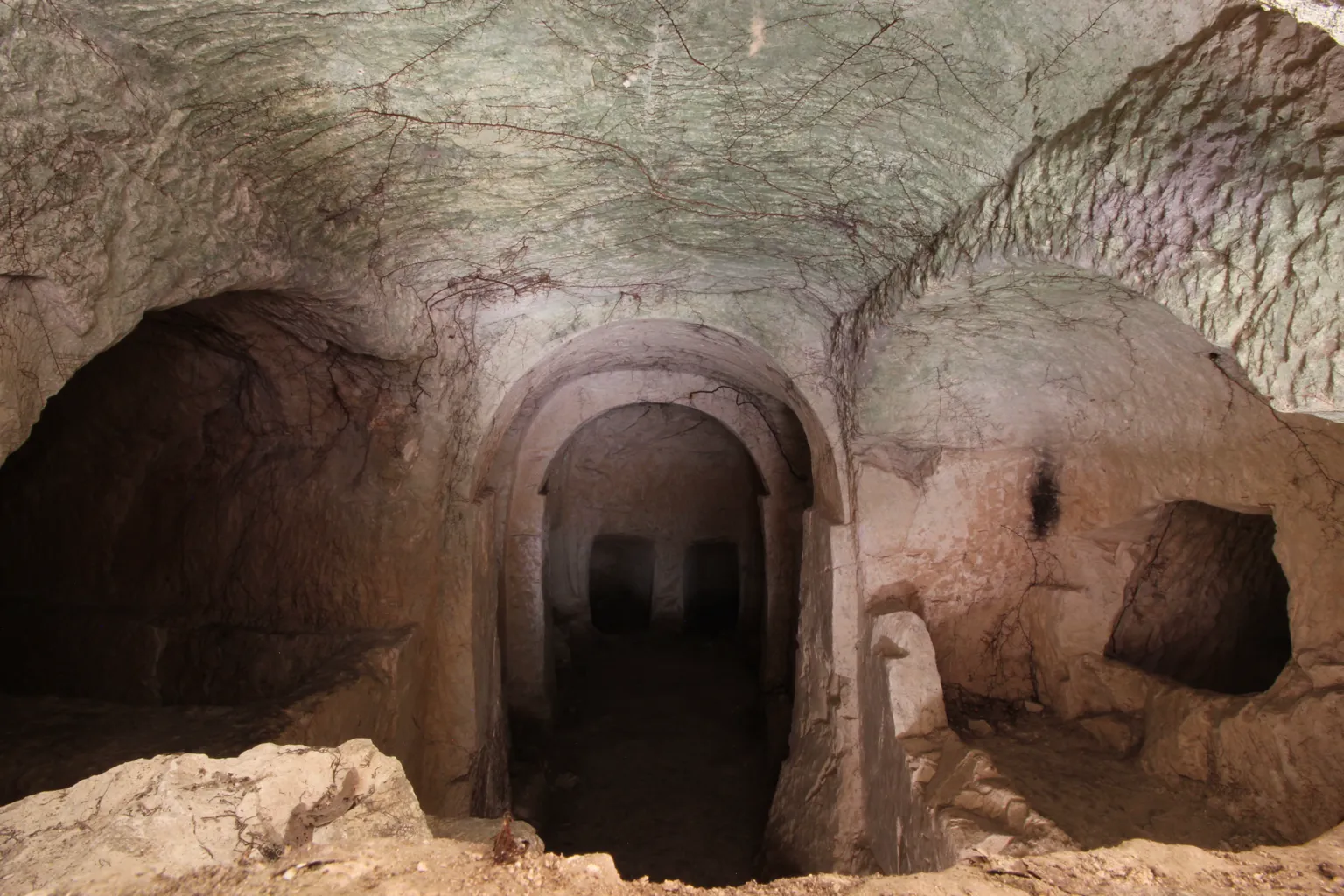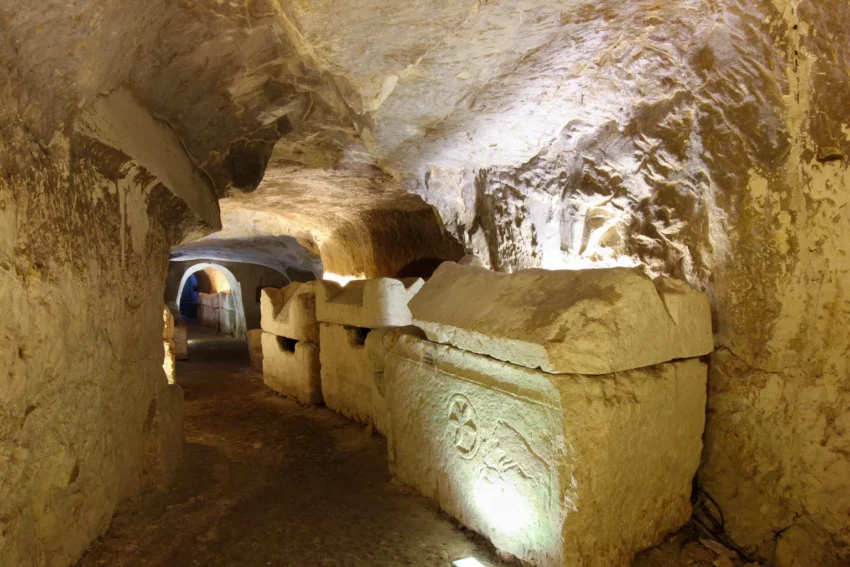Overview of Beit She’arim Necropolis
Beit She’arim, known in Hebrew as בֵּית שְׁעָרִים (“House of Gates”), is a significant archaeological site located in the southern foothills of the Lower Galilee, 20 km east of Haifa, Israel. This site encompasses an extensive necropolis of rock-cut tombs which were part of the ancient Jewish town of Beit She’arim. The necropolis, recognized for its historical and cultural significance, was declared a UNESCO World Heritage Site in 2015.
Get your dose of History via Email
Historical Context and Identification
The area where Beit She’arim now lies was originally known as the Arab village of Sheikh Bureik in early modern times. It was depopulated in the 1920s due to the Sursock Purchases and was identified as Beit She’arim in 1936 by historical geographer Samuel Klein. The site is now part of Beit She’arim National Park, managed by the National Parks Authority.
Archaeological Significance
Beit She’arim’s necropolis is renowned for its more than 30 burial cave systems carved out of soft limestone. These catacombs were first explored in the 20th century, revealing that they had suffered considerable neglect and damage, primarily from grave robbers believed to have been active in the 8th and 9th centuries AD. The site also served various purposes through different periods, including as a refuge during the Mameluk period (13th-15th centuries AD).

Inscriptions and Artifacts
The necropolis serves as a veritable book inscribed in stone, documenting two centuries of historical and cultural achievements through its elaborate symbols, figures, and a wealth of inscriptions in Hebrew, Aramaic, Palmyrene, and Greek. These inscriptions and artistic adornments highlight Beit She’arim as a crucial center of Jewish life and culture, particularly during the Roman and Byzantine periods.
Historical Phases of Beit She’arim
Iron Age to Roman Period
The initial settlement at Beit She’arim dates back to the Iron Age, with significant developments during the Second Temple period. Founded at the end of the 1st century BC, during King Herod’s reign, it became an important center of Jewish learning and culture. Notably, after the destruction of the Second Temple in 70 AD, the Sanhedrin relocated several times, eventually settling in Beit She’arim.
Early Islamic to Ottoman Period
From the Early Islamic period (7th century AD), the settlement at Beit She’arim was sparse, with various findings indicating activities during the Umayyad and Abbasid periods. The site continued to be recognized into the Ottoman period, with the small Arab village of Sheikh Bureik existing above the necropolis.

British Mandate and Archaeological Research
During the British Mandate, significant archaeological interest was directed towards Beit She’arim, particularly in the 1930s and 1950s by scholars like Benjamin Mazar and Nahman Avigad. Excavations have continued into the 21st century, revealing more about the ancient town and its necropolis.
Conclusion
Beit She’arim stands as a testament to the rich cultural and historical heritage of the Jewish people. Its extensive necropolis, adorned with inscriptions and artifacts, offers invaluable insights into the religious, social, and political life of the period. As excavations and research continue, the site promises to yield further discoveries about its past inhabitants and their customs, making it an indispensable resource for historians and archaeologists worldwide.
Sources:

